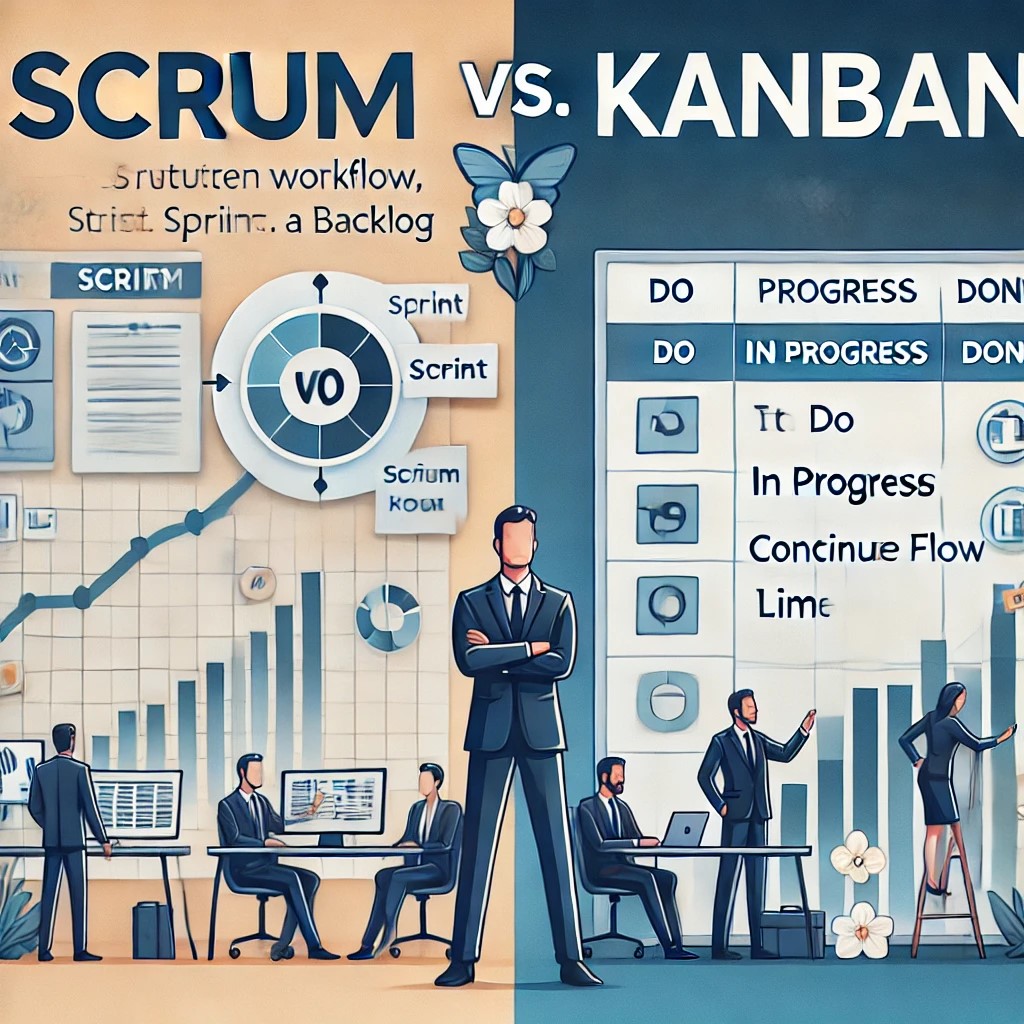
When managing projects, particularly in the field of software development, Agile methodologies like Scrum and Kanban are among the most popular frameworks. Each offers unique advantages depending on the nature of the work and the team dynamics. In this blog, we’ll explore the key differences between Scrum and Kanban, their components, and when each methodology is more applicable.
Understanding Scrum
Scrum is a structured Agile framework designed to deliver small, incremental pieces of a product within defined time periods, known as Sprints. Here's a breakdown of its key components:
1. The Product Backlog
The Product Backlog is a prioritized list of features, tasks, or user stories that need to be delivered. This backlog is managed by the Product Owner, who communicates with stakeholders to determine priorities.
2. Roles in Scrum
- Product Owner: Often a business analyst, they define what needs to be delivered and prioritize the backlog.
- Scrum Master: A facilitator and project manager, responsible for ensuring the team adheres to Scrum practices.
- Development Team: Includes developers, testers, and other contributors who complete the work.
3. Sprints and Planning
A Sprint is a time-boxed iteration, typically lasting two to three weeks, where a small, shippable product increment is developed. Before a Sprint starts, the team conducts:
- Backlog Grooming: Prioritizing and refining tasks.
- Sprint Planning: Estimating and selecting tasks the team commits to completing within the Sprint.
4. Estimation and Capacity
Teams estimate tasks using metrics like story points. Over time, teams determine their capacity—the amount of work they can reliably deliver in a Sprint. Velocity charts track this capacity, showing average performance across multiple Sprints.
5. Daily Stand-ups and Retrospectives
Scrum emphasizes regular communication and continuous improvement:
- Daily Stand-ups: Brief meetings to discuss progress, planned work, and blockers.
- Sprint Retrospective: A review at the end of each Sprint to reflect on what went well, what didn’t, and how to improve.
6. Delivering and Releasing
At the end of each Sprint, the team delivers a working product increment. This increment should be complete, potentially shippable, and integrated into the overall project.
Understanding Kanban
Kanban is a more flexible framework focusing on visualizing work, limiting work in progress (WIP), and ensuring a continuous flow of tasks. Here's how it works:
1. The Kanban Board
The heart of Kanban is its visual board, which typically includes columns such as To Do, In Progress, and Done. Tasks (or stories) move across these columns as they are worked on and completed.
2. Continuous Flow
Unlike Scrum, Kanban doesn’t use time-boxed Sprints. Instead, tasks flow continuously from the backlog to completion. Teams can release work whenever it is ready, without waiting for the end of a Sprint.
3. No Defined Roles
While Scrum has clearly defined roles (e.g., Scrum Master, Product Owner), Kanban is less rigid. Teams manage their own workflow, and there’s no need for Sprint planning or retrospectives.
4. Ideal for Support Teams
Kanban is particularly suited for environments where work is unpredictable or comes in continuously, such as:
- Helpdesk or IT support teams.
- Projects where tasks are handled on a first-in, first-out basis.
- Scenarios where priorities can change frequently.
When to Use Scrum
Scrum is ideal when:
- You’re working on software development or complex projects that require careful planning.
- The team needs structure and regular milestones to deliver increments of work.
- There’s a need for continuous improvement through retrospectives.
When to Use Kanban
Kanban works best when:
- You’re managing support tasks, maintenance, or operations with a steady flow of incoming work.
- Flexibility is more important than strict deadlines.
- Tasks can be completed independently without requiring extensive planning.
Conclusion
Scrum and Kanban are powerful frameworks for managing projects, each with its own strengths. Scrum offers a structured approach, emphasizing planning and iterative delivery, while Kanban provides flexibility and continuous workflow. By understanding the differences, teams can choose the methodology that best aligns with their project goals and working style. Whether you’re building complex software or managing an IT support desk, Agile methodologies like Scrum and Kanban can help your team deliver value efficiently and effectively.
Video Link : https://www.ravisagar.in/videos/how-scrum-different-kanban
